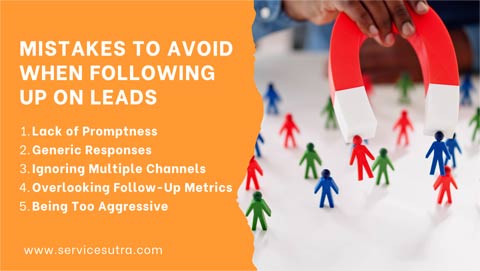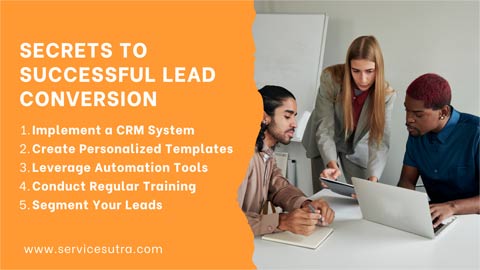In the fast-paced world of small businesses, effective lead management can make or break success. One critical aspect is following up on leads and customer inquiries. Timely and thoughtful follow-ups on business leads not only build rapport but also showcase professionalism, increasing the likelihood of turning leads into loyal customers.
If you are a small business owner, and you are struggling with the lead follow-up process then here’s the post worth checking. Today, in this post I am talking about the most common mistake small business owners make while following up the leads and easy and practical solutions to overcome this struggle.
The Importance of Effective Follow-Up Strategy
Before diving into the common mistakes, let’s emphasize why a well-crafted follow-up strategy is paramount.
While the lead follow-up process holds immense potential for converting potential clients into loyal customers, it’s not without its pitfalls. In this section, we’ll dissect the common mistakes that businesses often make when following up on leads.
Understanding and rectifying these missteps can pave the way for a more effective and fruitful lead management strategy, ensuring that valuable opportunities aren’t lost in the crucial phase of customer engagement.
Let’s delve into the nuances of these errors and explore actionable solutions to transform follow-ups into a powerful tool for business growth.
Common Mistakes We Make When Following Up on Leads
Here are the most common mistakes small business owners make when following up on leads and customers.

Lack of Promptness
One of the cardinal sins in lead management is delaying your response. In a world where attention spans are shrinking, a prompt reply speaks volumes about your commitment and eagerness to serve. Explore automation tools to ensure no lead slips through the cracks due to delayed responses.
Generic Responses
Personalization is key. Using generic templates might save time, but it often comes at the cost of personal connection. Tailor your responses to the specific needs and queries of the potential customer, showcasing that you’ve taken the time to understand their requirements.
Ignoring Multiple Channels
In a multi-channel world, leads can come from various platforms—emails, social media, phone calls, etc. Ignoring any of these channels could mean missing out on valuable opportunities. Implement an integrated CRM system to streamline communication across all channels.
Overlooking Follow-Up Metrics
Tracking the success of your follow-up strategy is as crucial as the strategy itself. Ignoring metrics like response rates, conversion rates, and customer feedback can prevent you from identifying what’s working and what needs improvement. Regularly analyze these metrics to refine your approach.
Being Too Aggressive
While persistence is key, there’s a fine line between being persistent and being overly aggressive. Bombarding potential customers with excessive follow-ups can lead to annoyance rather than conversion. Strike a balance by gauging customer interest and adjusting your approach accordingly.
Optimizing Lead Follow-Up: Actionable Strategies for Success
Now that we’ve identified the common mistakes, let’s explore actionable solutions to enhance your follow-up strategy:

1. Implement a CRM System
Invest in a robust Customer Relationship Management (CRM) system to streamline lead management. This not only helps in organizing leads but also allows for personalized communication, ensuring no lead is left unattended.
2. Create Personalized Templates
While avoiding generic responses is crucial, having personalized templates can still save time. Create a set of templates that can be easily customized based on the nature of the inquiry. This way, you maintain efficiency without sacrificing personalization.
3. Leverage Automation Tools
Automation tools can significantly improve response times. Set up automated responses for initial inquiries, freeing up time for your team to focus on more complex queries. Just ensure that automation doesn’t compromise the personal touch in your communication.
4. Conduct Regular Training
Equip your team with the skills and knowledge needed for effective follow-ups. Conduct regular training sessions on communication, customer understanding, and the use of CRM tools. Well-trained staff can make a substantial difference in conversion rates.
5. Segment Your Leads
Not all leads are the same. Segment your leads based on factors like demographics, interests, and the stage of the sales funnel. This allows for more targeted and relevant follow-ups, increasing the chances of conversion.
Conclusion
In the competitive landscape of small businesses, mastering the art of following up on leads is a game-changer. By avoiding common mistakes and implementing effective strategies, businesses can turn inquiries into long-term relationships. Regularly reassess and refine your follow-up processes to stay ahead in the dynamic world of customer acquisition.
By adopting these strategies, businesses can build a robust follow-up system that not only converts more leads but also fosters positive relationships with customers, setting the foundation for long-term success.






